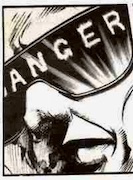|
Now is the time on Sprockets when we book This poll is closed. |
|||
|---|---|---|---|
| Treasure Island by Robert Louis Stevenson |
|
5 | 18.52% |
| The Curse of Capistrano by Johnston McCulley |
|
4 | 14.81% |
| You Can't Win by Jack Black |
|
3 | 11.11% |
| Life and Times of Frederick Douglass |
|
4 | 14.81% |
| Memoirs of Extraordinary Popular Delusions and the Madness of Crowds by Charles Mackay |
|
11 | 40.74% |
| Total: | 22 votes | ||
|
Vote for next month's BOTM. You can vote for more than one, but please only vote if you plan on participating: part of the purpose of the poll is an interest check. Participation has been flagging so all the choices for this month are available as free ebooks and should be entertaining reads. 1) Treasure Island by Robert Louis Stevenson quote:Stevenson conceived the idea of Treasure Island (originally titled, The Sea Cook: A Story for Boys) from a map of an imaginary, romantic island idly drawn by Stevenson and his stepson Lloyd Osbourne on a rainy day in Braemar, Scotland. Stevenson had just returned from his first stay in America, with memories of poverty, illness, and adventure (including his recent marriage), and a warm reconciliation between his parents had been established. Stevenson himself said in designing the idea of the story that, "It was to be a story for boys; no need of psychology or fine writing; and I had a boy at hand to be a touchstone. Women were excluded... and then I had an idea for Long John Silver from which I promised myself funds of entertainment; to take an admired friend of mine... to deprive him of all his finer qualities and higher graces of temperament, and to leave him with nothing but his strength, his courage, his quickness, and his magnificent geniality, and to try to express these in terms of the culture of a raw tarpaulin." Completing 15 chapters in as many days, Stevenson was interrupted by illness and, after leaving Scotland, continued working on the first draft outside London. 2) The Curse of Capistrano (AKA The Mark of Zorro) by Johnston McCulley quote:Zorro (Spanish for "Fox") is a fictional character created in 1919 by American pulp writer Johnston McCulley, and appearing in works set in the Pueblo of Los Angeles during the era of Spanish California (1769–1821). He is typically portrayed as a dashing masked vigilante who defends the commoners and indigenous peoples of California against corrupt and tyrannical officials and other villains. His signature all-black costume includes a cape, a hat known as a sombrero cordobés, and a mask covering the upper half of his face. 3) You Can't Win by Jack Black quote:You Can't Win is an autobiography by burglar and hobo Jack Black, written in the early to mid-1920s and first published in 1926. It describes Black's life on the road, in prison and his various criminal capers in the American and Canadian west from the late 1880s to early 20th century. The book was a major influence upon William S. Burroughs and other Beat writers. It was made into a film in 2015. quote:My background is crowded with robberies, burglaries, and thefts too numerous to recall. All manner of crimes against property. Arrests, trials, acquittals, convictions, escapes. Penitentiaries! I see in the background four of them. County jails, workhouses, city prisons, Mounted Police barracks, dungeons, solitary confinement, bread and water, hanging up, brutal floggings, and the murderous straitjacket. I see hop joints, wine dumps, thieves' resorts, and beggars' hangouts. Crime followed by swift retribution in one form or another. I had very few glasses of wine as I traveled this route. I rarely saw a woman smile and seldom heard a song. In those twenty-five years I took all these things, and I am going to write about them. And I am going to write about them as I took them - with a smile. 4) Life and Times of Frederick Douglass, by Frederick Douglass quote:Life and Times of Frederick Douglass is Frederick Douglass' third autobiography, published in 1881, revised in 1892. Because of the emancipation of American slaves during and following the American Civil War, Douglass gave more details about his life as a slave and his escape from slavery in this volume than he could in his two previous autobiographies (which would have put him and his family in danger). It is the only one of Douglass' autobiographies to discuss his life during and after the Civil War, including his encounters with American presidents such as Lincoln and Garfield, his account of the ill-fated "Freedman's Bank", and his service as the United States Marshall of the District of Columbia. 5) Memoirs of Extraordinary Popular Delusions and the Madness of Crowds by Charles Mackay quote:Extraordinary Popular Delusions and the Madness of Crowds is an early study of crowd psychology by Scottish journalist Charles Mackay, first published in 1841.[1] The book was published in three volumes: "National Delusions", "Peculiar Follies", and "Philosophical Delusions".[2] Mackay was an accomplished teller of stories, though he wrote in a journalistic and somewhat sensational style. https://en.wikipedia.org/wiki/Extraordinary_Popular_Delusions_and_the_Madness_of_Crowds
|
|
|
|
|

|
| # ? May 8, 2024 18:48 |
|
Phone posting so no poll voting but put me down for the jack black one.
|
|
|






